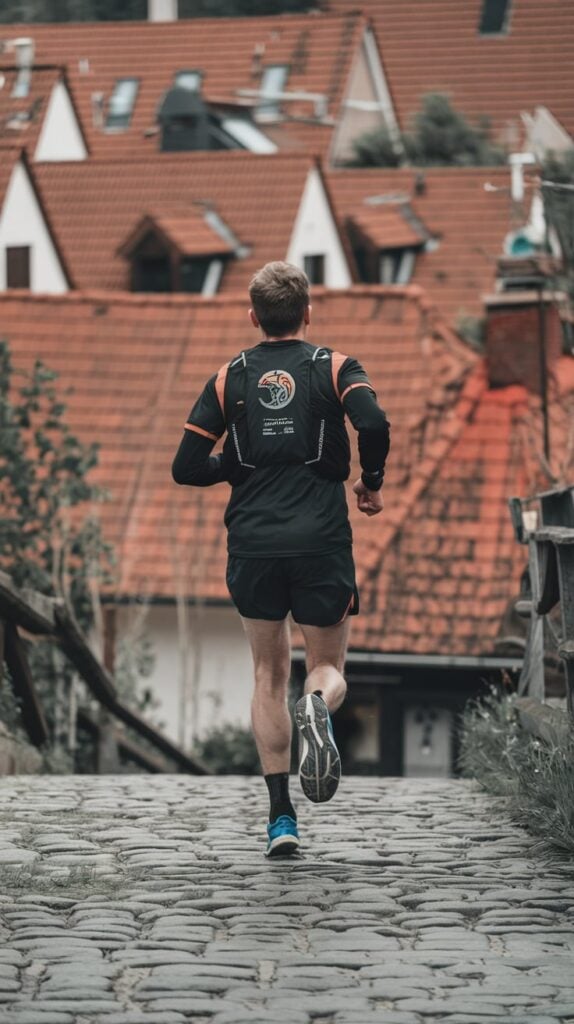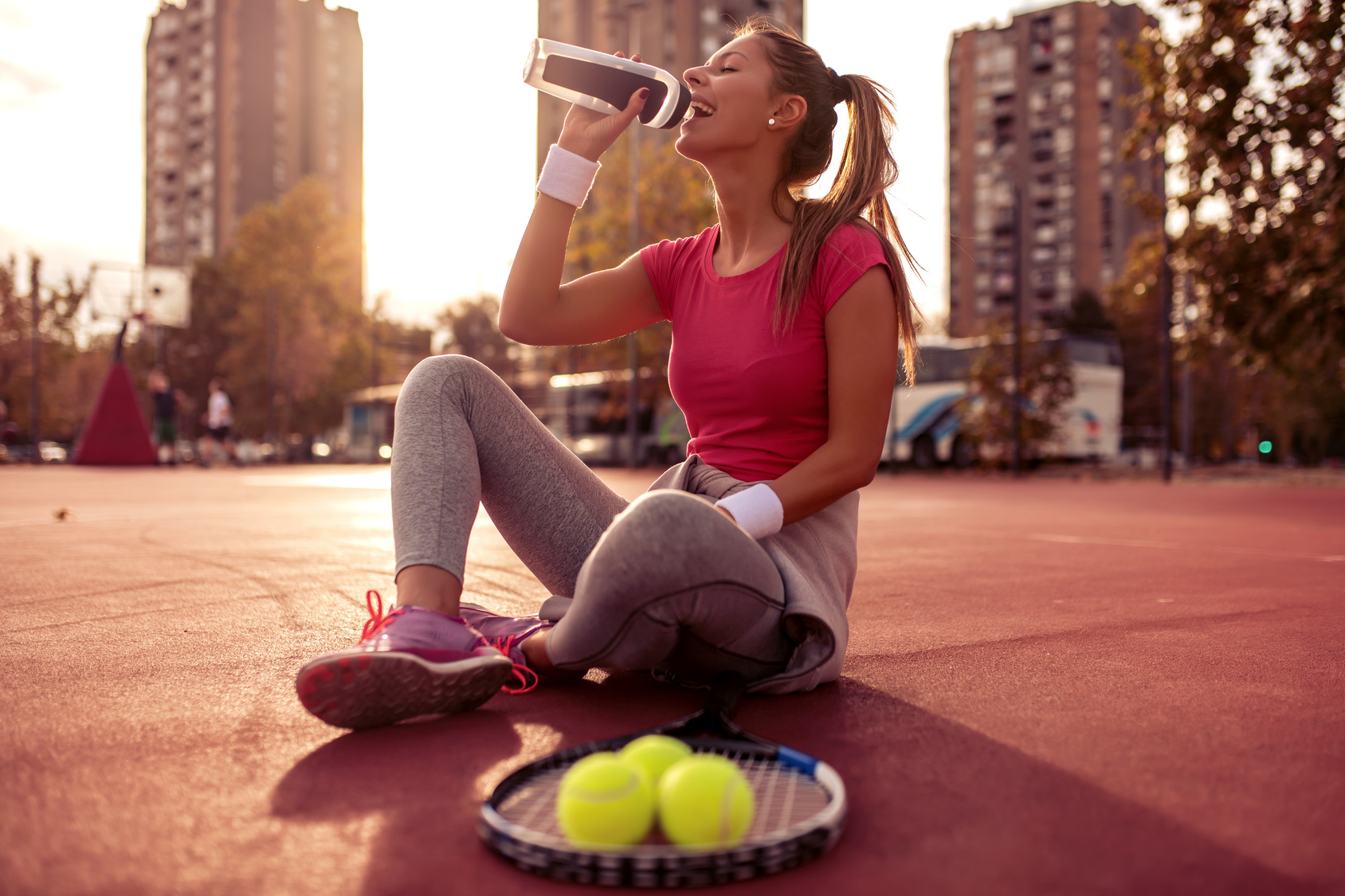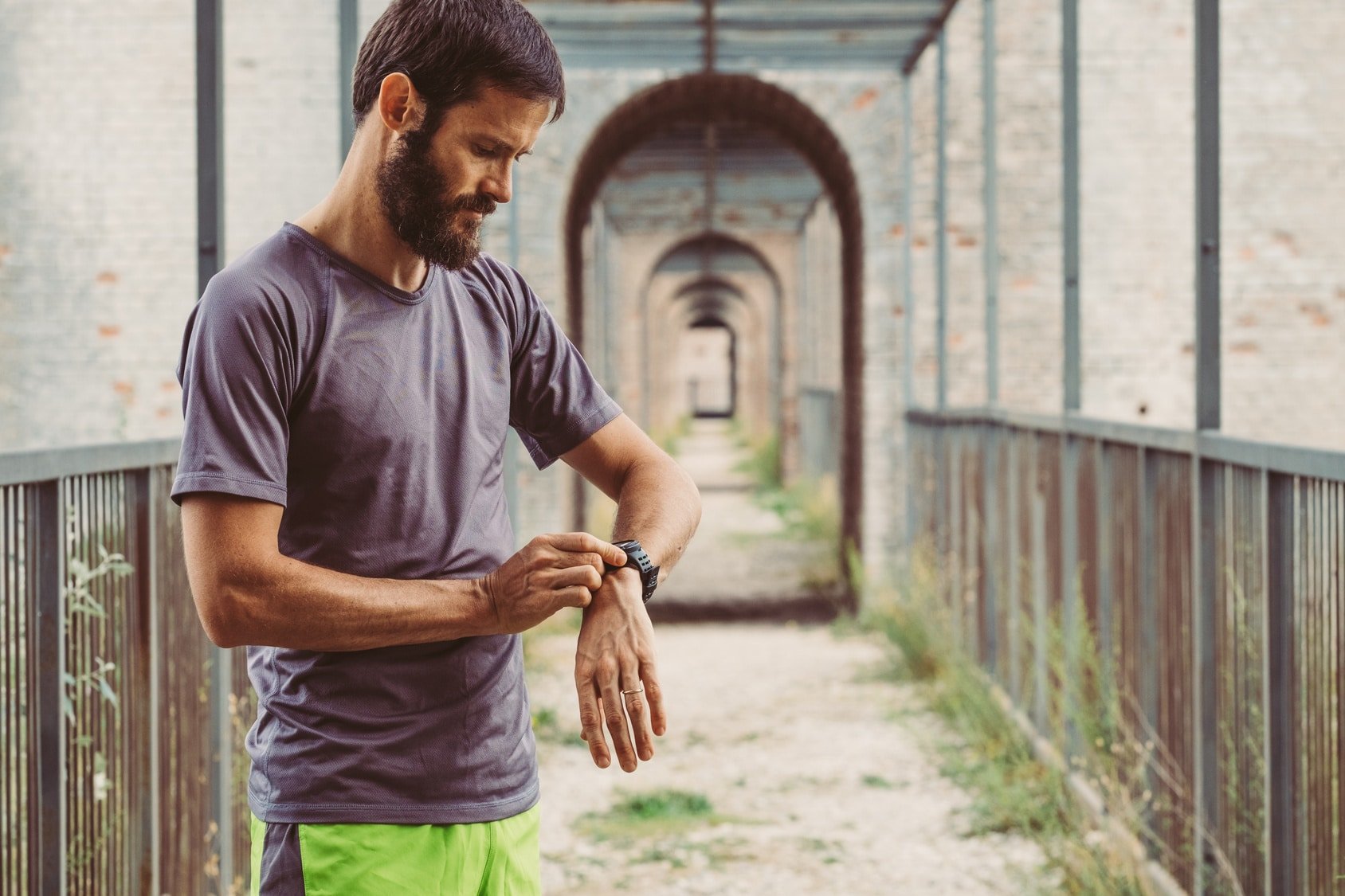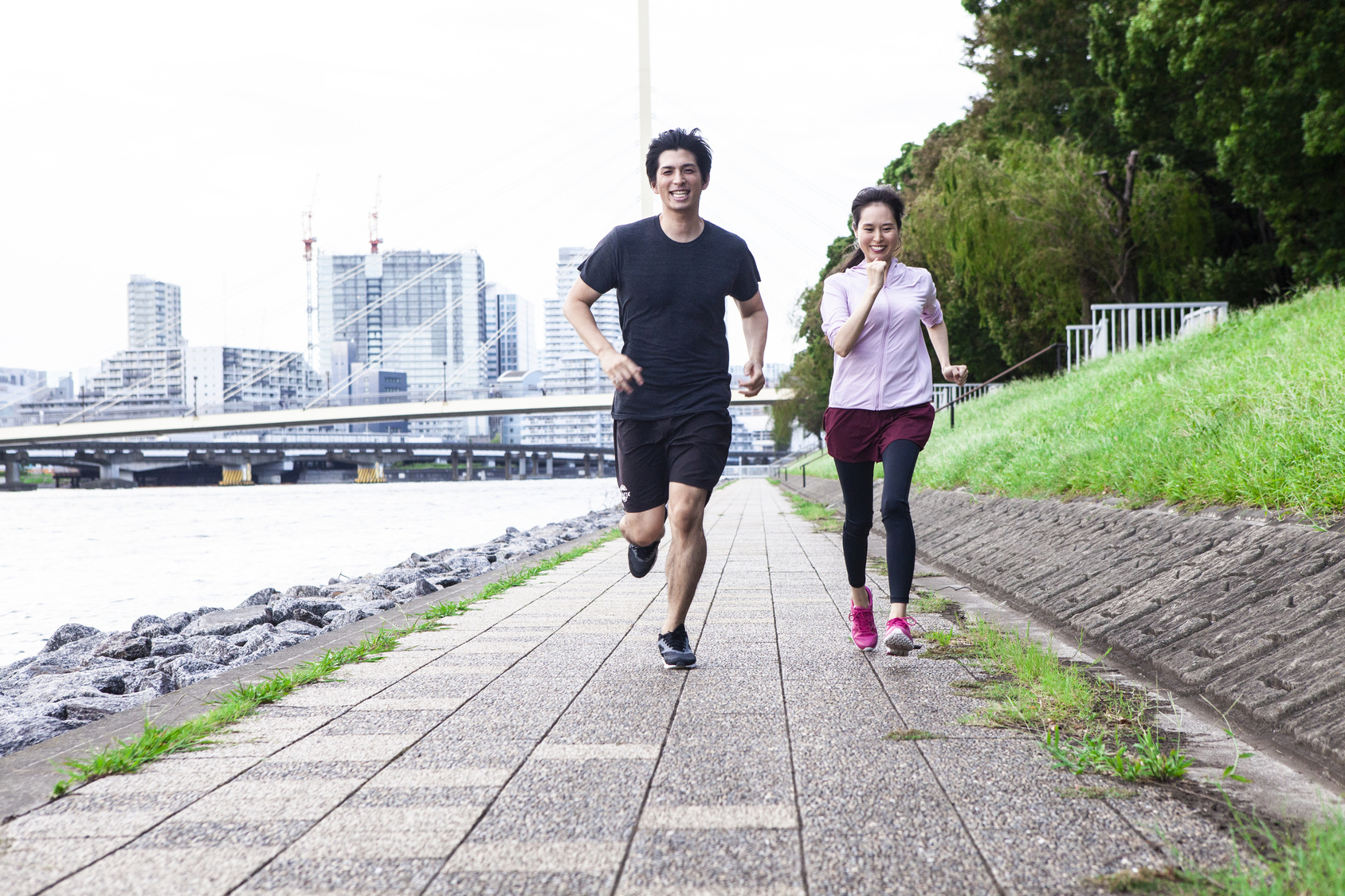I’ll never forget crossing the finish line of a sticky summer 10K and catching a glimpse of myself in a car window. I looked like a fire truck. Bright red. Straight outta the oven. My friends ran over thinking I was about to collapse. One of them laughed and said, “You joined the tomato club, huh?”
Honestly, I felt fine — better than fine. I crushed that race. But my face? It told a different story. And that wasn’t the first time. I’ve coached tons of runners who’ve had the same “what the heck is wrong with my face?” moment.
Heck, one bald guy I know finished a treadmill run, walked up to the front desk to ask for water, and the hotel clerk gasped like he’d been hit by a bus. Gave him three bottles and a chair. The poor guy was just really red.
The truth? It wasn’t heatstroke. It wasn’t dehydration. It wasn’t anything serious.
It was just a classic runner flush — and yep, it’s totally normal.
So Why Does My Face Look Like It’s Been Boiled?
Here’s the short and sweet: when you run, your body heats up — fast. Your heart kicks into overdrive, your core temp rises, and your body’s gotta dump that heat somewhere. That’s where your skin comes in — especially your face. Blood vessels near the skin open up (this is called vasodilation) to bring hot blood to the surface so the heat can escape.
Think of it like your body’s radiator — when things start running hot, that radiator has to cool the engine. Your face is the radiator.
Now, your face is packed with capillaries, and when that warm blood rushes up, it’s like turning on a red light. Boom — cherry face.
Totally normal. Nothing to panic over.
But here’s the deal — if your red face comes with dizziness, chills, nausea, or a pounding headache… that’s not just a post-run glow. That could be heat exhaustion creeping in. And trust me, you do not want to mess around with that. Stop, hydrate, get in the shade, and cool down ASAP.
If you feel good and it’s just a color change? That’s your body doing its job. Just wear it like a badge of effort.
Why Do Some People Look Like Beets and Others Barely Blush?
Ah yes, the classic runner mystery: why do some of us go full tomato mode while others finish looking like they just stepped out of yoga class?
Short answer: genetics. Longer answer? Skin tone, capillaries, and how your body reacts to heat.
If you’ve got lighter skin, you’ll see that red pop more — especially if you’re from Northern European descent (shout out to my Celtic crew, I see you). It’s just biology. Your capillaries are closer to the surface, so when the blood rushes in, it’s front and center.
Darker-skinned runners still flush, but it might not be as obvious because melanin masks it a bit. Same heat response, just less visible.
Some folks just have super sensitive skin or a ton of superficial blood vessels — the kind that makes you blush just thinking about talking to someone cute. Same thing happens with wine, embarrassment, and yes… running.
No, it doesn’t mean you’re out of shape. No, it doesn’t mean you’re dying. It just means your body is cooling itself down the way it knows how.
5 Big Reasons Your Face Goes Crimson While Running
Let’s break this down like I do with my coaching crew. These are the most common reasons you’re lighting up like a holiday bulb:
1. Thermoregulation — Your Body’s Cool-Down System
This is the big one. Running raises your core temperature, so your body sends hot blood to the skin to release heat. It’s a built-in AC system.
The harder you push (or the hotter the day), the redder you’ll get. It’s normal. It means you’re working. But if you stop sweating and start feeling weak or dizzy? Game over — cool down, drink up, and listen to your body.
2. Skin Sensitivity and Your Natural Complexion
Some of us were just born to flush. Fair-skinned runners? You’re going to look like you ran through a chili field — and that’s fine.
People with more pigment? Might not show the flush, but the blood’s still moving. Don’t let your mirror tell you how hard you worked — let your body tell you how you feel.
What Can You Do About It?
- Hydrate like it’s your job. Dehydration cranks up the heat response.
- Wear a light, breathable hat to protect from sun and hide the flush if it bothers you.
- Stick to shady routes on hot days — your skin will thank you.
- Cool down post-run with a splash of cold water or a damp towel around your neck. I’ve even tossed ice in my hat on brutal days.
3. Histamine: Your Body’s Built-In Alarm System
Ever finish a run and look like someone slapped your face with a tomato? Maybe you even get those itchy red blotches that make you wanna claw at your skin. You’re not alone. One big reason? Histamines — your body’s chemical fire alarm.
See, for some of us, exercise doesn’t just crank up the heart rate — it sets off a histamine surge in the skin. These are the same little troublemakers that go off when you have allergies. They open up blood vessels, crank up circulation, and yeah… they can make your skin red, hot, and itchy.
Some experts think it’s part of your body’s way of coping with the stress of hard work — getting more blood and oxygen to the muscles, helping with minor tissue stress. Pretty clever, actually. But for those of us who are “histamine releasers,” it can feel like your skin’s throwing a tantrum mid-run.
And sometimes, it’s more than a flush. A small percentage of runners deal with exercise-induced urticaria — basically, hives or intense itching caused by the histamine dump. Sounds dramatic, but the good news is it usually chills out once you cool down.
If you’re one of those folks who turns into an itchy tomato after a hard session, talk to your doc — they might suggest an antihistamine. But don’t just pop one without guidance. Some meds mess with your body’s ability to handle heat, which can be risky on a long summer run.
Runner reality check:
That red, splotchy look? It’s not a problem — it’s your body yelling, “We’re working hard!” If it fades as you cool down and doesn’t cause major issues, it’s just part of the ride.
4. Fitness Level & Intensity: It’s Not Just a Beginner Thing
Alright, let’s squash a myth: turning red after a run doesn’t mean you’re outta shape.
Sure, when you’re new to running, everything feels hard. Your heart’s pounding, your face is glowing, and you’re wondering if this is how you die. That deep red flush? Totally normal. It’s your body hustling hard — trying to cool off, manage blood flow, and keep you upright.
But here’s the twist — seasoned runners flush too. One guy I coached could run a sub-20 5K but still lit up like a stoplight during hill sprints. The difference? He’s working at a higher intensity. For him, it takes a beastly effort to hit that flush zone, but it still happens.
As you get fitter, your body gets better at cooling. You start sweating earlier and more efficiently — your internal thermostat gets dialed in. That means you might not get as red during the same easy-paced run you struggled through six months ago.
One runner told me she used to flush just jogging around the block. A year later? Only breaks into tomato-mode when she’s pushing tempo in the summer heat.
So, does it ever go away? Not really. You just have to run harder to get there. Like a veteran marathoner once joked to me, “The red face never left — I just earned it at faster paces.”
Here’s the bottom line:
Your red face is a sign of effort, not weakness. Beginners, elites — we all wear it when we’re working hard. Don’t stress it.
Runner challenge:
Think back — when was the last time your effort made your face match your shirt? What level of intensity gets you there these days?
5. Weather: Your Face vs. Mother Nature
Now let’s talk about something you can’t control — the elements. Nothing messes with your skin like weather, and it absolutely plays into how red your face gets on a run.
Heat
Running in hot weather? It’s brutal. Your body is doing double duty — trying to power your stride and dump heat. That means more blood gets shuttled to your skin, and boom: flushed face.
Cold
Cold weather’s sneaky. You’d think freezing temps would cool you off, but it’s the opposite sometimes. Warm blood meets cold air and your face gets red anyway — like you’ve just come off a ski slope. Plus, the dry air and wind can chafe your skin. Instant windburn.
Humidity
High humidity is like running through soup. Sweat can’t evaporate, so you don’t cool down as well. Your body cranks up the skin blood flow, and you turn beet-red faster than you can say “Where’s the shade?”
Sun
Even if you don’t burn, direct sunlight heats your skin. That means even more flushing. Long-term exposure can dilate capillaries too — which is why some outdoor lifers have that constant ruddy look. And if you’re prone to rosacea? UV rays are one of the biggest triggers.
Wind
Wind can be your best friend or your skin’s worst enemy. A cool breeze helps sweat evaporate, which keeps you cooler. But a cold blast? That’s irritation city. Dryness, chapping, redness — especially on the nose and cheeks. Winter runners know this struggle all too well.
Real talk:
I’ve had winter long runs where my face felt like sandpaper for days after. I’ve also had summer track sessions where I looked like I’d just run through a volcano. Neither meant anything was wrong — just nature doing its thing.
Runner pro tip:
Pay attention to the weather before you head out. That flushed face might be more about the temp, humidity, or wind than your effort. Adjust your gear and hydration accordingly.
How to Stop Looking Like a Tomato After Your Run
Listen — some of us are just wired to turn into walking beets when we run. Doesn’t mean you’re weak, broken, or doing something wrong. It’s just your body saying, “Hey, I’m cooling you down.”
That said, if you’re tired of finishing every run looking like you wrestled a jalapeño in a sauna, here’s a checklist that actually helps.
This ain’t magic, but it works.
PRE-RUN: SET YOURSELF UP TO STAY COOL
Run Smart, Not Hot
Time your run early in the morning or late in the evening. You’re not proving anything by going out at noon in July. Cooler temps mean your body doesn’t have to work overtime to dump heat, which means less red-face drama.
Stuck with a midday run? Hunt down shade or head to the treadmill.
Hydrate Like You Mean It
Don’t just slam a bottle right before you lace up. Stay hydrated throughout the day. Think of it like prepping your internal air-conditioning — blood that’s well-hydrated flows better, regulates temp better, and helps you cool down without frying your cheeks.
Dress for the Mission
Lightweight. Loose. Breathable. Go for moisture-wicking gear that doesn’t trap heat like a trash bag. And ditch the black hoodie unless you want to look like a boiled lobster.
Light colors reflect heat — dark ones soak it up. Simple move, big difference.
Slap on the Right Sunscreen
Go for zinc-based or titanium dioxide sunscreens — they’re physical blockers, not chemical fryers. Plus, zinc actually helps calm your skin.
I’ve run with the wrong stuff and ended up redder and itchy. Look for labels that mention rosacea or “sensitive skin.”
Moisturize, Bro
Yeah, I said it. A thin layer of oil-free moisturizer with calming stuff like green tea or niacinamide can act like armor for your face.
It keeps the wind and dry air from wrecking your skin — and helps reduce that post-run flush. Bonus: feels good too.
Watch the Pre-Run Fuel
Skip the booze and spicy burritos a couple hours before your run. Both can dilate blood vessels and get you flushed before you even hit mile one.
Same goes for caffeine and chocolate — some folks get heat-face from ’em. If you’re one of those, keep pre-run snacks cool and mild.
DURING YOUR RUN: STAY COOL, STAY SAFE
Listen to Your Body, Not Your Watch
If your face starts to feel like it’s on fire or you get dizzy, don’t be a hero. Ease up. Walk. Let your system cool off. You’re not quitting — you’re running smart.
Going red is normal. Going red and feeling off? That’s your body saying, “Slow the heck down.”
Splash & Cool
Bring a water bottle or plan for a water stop. Splashing water on your face, neck, or wrists cools you quick — especially if it’s cold.
I carry a soaked bandana on hot days and drape it over my neck mid-run. Feels like heaven. Bonus trick: hold an ice cube in your mouth if you’ve got one — cools your core from the inside.
Find the Shade or Create a Breeze
Run shaded routes. Even dappled tree cover makes a difference. A light breeze is your best running partner in the heat — it pulls sweat off your skin and cools you down fast.
On the treadmill? Set up a fan in your face like a boss. Doesn’t just feel good — it keeps your face from going nuclear.
Drink While You Move
If you’re out for more than 30 minutes, sip as you go. Water or electrolyte drink — your call. But don’t wait until you’re parched.
A few gulps every 10–15 minutes keeps your engine cool. Mild dehydration messes with your blood flow and sweating — and you’ll turn red faster than you can say “PR.”
After Your Run: Cooldown Like a Pro (Not a Rookie)
Alright, you crushed your run. You’re dripping sweat, heart’s thumping like a bass drum, and your face is lighting up like a stop sign. Been there. So, what now?
Here’s how to bring it back down without wrecking your skin or feeling like you’ve been hit by a freight train.
Ease Off — Don’t Slam the Brakes
First rule: don’t just stop cold after your last stride. That’s rookie stuff. I see it all the time — someone finishes a hard tempo run and just drops into a bench like they crossed a finish line in the Olympics.
Bad idea.
Instead, spend 5 to 10 minutes walking or slow jogging. Let that heart rate come down like a dimmer switch, not a light switch. You want the blood flow to return to normal — not pool in your face and make you look like you just sprinted out of a volcano.
Trust me, it feels better. Your circulation thanks you. And yeah, it even helps that tomato-face flush go away quicker.
Go Cold — ASAP
This part’s gold: cold therapy right after you stop. I’m talking face and neck — cool ‘em down fast.
Me? I keep a little towel in the freezer or cooler. Some folks dunk a washcloth in cold water before heading out. When you finish, slap that sucker on your cheeks, forehead, and neck. Few minutes is all you need. Boom — those blood vessels start to shrink back down.
No towel? Splash your face with cold water. Or press a cold water bottle on your face like a mini ice pack. I’ve even seen runners dunk their hats and slap ’em back on their head — whatever works. The goal? Drop your skin temp before your body turns you into a bonfire.
Soothe the Skin, Don’t Torch It
Once you’re cooled down, treat your skin like it just finished a 10-round boxing match — gentle stuff only.
Start with something calming: aloe vera gel is a solid go-to. It’s cooling, anti-inflammatory, and your skin loves it. Want to take it up a notch? Look for stuff with niacinamide (that’s vitamin B3 — great for calming redness and rebuilding your skin barrier) and hyaluronic acid (gives your skin moisture without the grease or sting).
One that runners in our circle swear by? Replenix Hyaluronic Acid Hydration Serum. Goes on light, no irritation, and brings your skin back to life.
Bottom line: your skin just battled wind, sweat, heat, maybe even sunburn. Be kind to it.
No Harsh Stuff for 24 Hours — Seriously
If your skin’s still red and raw, do it a favor: skip the tough stuff for the rest of the day.
No scrubs. No retinol. No acid toners. Save those heavy hitters for another time. Using them right after a run is like throwing hot sauce on a sunburn. Doesn’t end well.
If you’re on prescriptions like tretinoin or anything else that already messes with redness? Schedule them for your off days or bedtime — not right after a 6-mile tempo.
Gotta Be Seen? Use the Green
Now, if you’re heading to a meeting or brunch and your face still looks like a red light — yeah, there’s a fix.
Green-tinted primer or BB cream. Sounds weird, works like magic. Green tones down red. It’s like color math.
Pick one that’s made for sensitive skin — some even come with soothing ingredients built in. Just a thin layer, and you’re good to go. Nobody needs to know you just ran a 10K before coffee.
Of course, you don’t need makeup. Embrace the glow if that’s your vibe. But the green trick? Handy when you need to look less like a tomato and more like a human.
When Red Flags Aren’t Just About Your Face
Most of the time, a red face is just your body doing its job. But don’t ignore when it feels off. Here’s when that flush might mean something more serious:
Heat Exhaustion or Heat Stroke
You’re red, but now you’re also dizzy, nauseous, weak, and your head’s pounding? That’s not just post-run fatigue — that’s your body throwing up red flags.
Heat exhaustion sneaks up fast — especially on hot, humid days. It’s when your body’s struggling to cool down, and if you ignore it, it can slide into heat stroke — which is no joke. We’re talking 911 territory.
Here’s what to look for:
- Red, sweaty skin
- Pounding heart
- Lightheadedness or nausea
- Cramps
- Maybe even vomiting
If that’s you, don’t play hero. Stop running, get in the shade, pour cold water over yourself, hydrate, and rest. If you’re not feeling better quick, seek help.
Worse? You stop sweating altogether and your skin’s hot and dry? That’s heat stroke. If you’re confused or about to faint, someone needs to call for help immediately.
Know the signs. Respect your body. No PR is worth your health.
Wrap-Up: Less Fire Engine, More Rosy Glow
You’re probably not gonna eliminate facial redness completely — especially if you’re the type who turns red fast (I do). But you can cool down smarter, treat your skin better, and stay safe on hot days.
And if you ever feel like that redness is more than just skin deep — don’t mess around. Your body talks. Listen to it.
When Red Means More Than Just “You Worked Hard”
Look, most of us get that post-run tomato face. It’s part of the game — especially after a hard effort or on a hot day. But if your face stays red long after you’ve cooled down — or turns beet-red after a light jog — there might be more going on than just heat.
I’ve had runners come to me thinking they were just “bad flushers,” only to find out it was actually something like rosacea or a side effect from meds. So let’s break it down.
Rosacea: More Than Just a Red Face
If your face looks sunburned for hours (or even days) after a run, or you’re red even when you’re chilling on the couch — don’t brush it off. That could be rosacea. It’s a skin condition that sticks around long after your cooldown. We’re talking:
- Constant flushing (cheeks, nose, forehead)
- Visible little blood vessels
- Sometimes even acne-like bumps
Unlike the normal post-run flush that fades as you sip water and stretch, rosacea lingers — and it doesn’t take much to set it off. Heat, spicy food, alcohol… all common triggers.
I had one runner tell me even standing by the stove fired up her face like she just finished a 10K.
If that sounds familiar — red face hours after your run, burning, stinging, or patchy bumps — it’s time to see a dermatologist. They can help figure out if it’s rosacea, sensitive skin, or something else.
There are treatments, too. Prescription creams like metronidazole or azelaic acid help calm things down. And there’s brimonidine gel, which literally tightens up blood vessels to reduce redness fast. In tougher cases, dermatologists use laser treatments like IPL or pulsed-dye laser to zap those tiny vessels and reduce the permanent redness.
Bottom line? If your face doesn’t calm down within an hour or two, or if you notice uneven flushing (rosacea often shows up like a butterfly across the cheeks and nose), don’t just tough it out — get checked.
Is It Your Meds?
Sometimes, it’s not your skin — it’s what you’re putting into your body.
Certain meds can trigger flushing or make it worse. Common offenders include:
- Blood pressure meds (especially vasodilators)
- High-dose niacin (vitamin B3)
- ED meds like sildenafil (Viagra) – yep, they dilate blood vessels
- Some antibiotics like doxycycline, especially if you’re getting sun exposure too
These can make your face flush like you just ran hill repeats — even if you didn’t move. So if you’re suddenly red during or after your runs and nothing else has changed, check your med list. Talk to your doc and let them know what’s going on.
And while rare, medical issues like hyperthyroidism, carcinoid syndrome, or severe allergic reactions can also cause flushing. Most runners won’t deal with these, but if you’re seeing red outside of workouts, or feeling faint, breathless, or weirdly out of it — get it checked. Better to be safe than sidelined.
Red Flags to Watch For
Okay, here’s when to stop guessing and talk to a doc:
- Redness that sticks around for hours after your run
- Flushing when you’re at rest or cool
- Skin that’s red and painful, burning, or bumpy
- Redness with other symptoms like shortness of breath, chest tightness, irregular heartbeat, or feeling faint (especially mid-run — that’s a 911 moment)
- A sudden change in how your face reacts. If you’ve always gone a little pink but now you’re full beet with minimal effort, something’s up.
I’m not saying panic. Most of the time, it’s harmless. But tuning into your body and asking the right questions? That’s part of running smart.
Skincare for Runners Who Go Red
If your face looks like a ripe tomato after every run, it’s time to give your skincare routine some love. No, I’m not talking about 12-step routines or spa days — just the right stuff to cool, calm, and protect.
Here’s what I tell my runners:
Do This
Go for Soothing Ingredients
Use stuff that hydrates and calms your skin — not strips it. Look for:
- Niacinamide (Vitamin B3): This is the MVP for redness. It calms, strengthens your skin barrier, and helps reduce inflammation. I use a serum with about 5% niacinamide in the morning and evening.
- Aloe Vera & Plant Extracts: Think green tea, chamomile, licorice root. They’re like ice packs in a bottle. I’ll hit my face with a mist after hot runs — cucumber + green tea is my jam.
- Hyaluronic Acid (HA): Big hydration boost, zero irritation. It draws water into your skin without making it greasy. Great after a sweaty run when your face is thirsty and grumpy. Products like Replenix’s HA serum are clean, light, and don’t clog pores.
Use Mineral Sunscreen — Every Day
Even if it’s cloudy. Even if it’s cold. UV rays will mess with your skin and crank up redness — especially if you’ve got rosacea.
Go with zinc oxide or titanium dioxide sunscreens. Look for ones made for sensitive skin, like EltaMD UV Clear SPF 46 — it has niacinamide built in and doesn’t feel heavy.
Cleanse Gently After Runs
When your face is red and hot, don’t attack it with gritty scrubs or harsh soaps. Go sulfate-free.
Cream cleansers or gentle gel washes are your friend. Look for ones with calming extras like oatmeal or feverfew (yep, it’s a thing).
Don’t Do This
- Don’t use harsh exfoliants or anything labeled “deep clean” or “tingling” (that’s usually code for “will torch your face”).
- Skip products with heavy fragrance, alcohol, or menthol — they’re known irritants.
- Avoid hot water post-run. Lukewarm is plenty.
Don’t Jack Up Your Skin: What to Avoid if You Flush Like Crazy
Alright, let’s talk about what not to do if your face turns beet red after every run — especially if your skin’s already on the sensitive side.
I’ve coached plenty of runners who thought they were doing their skin a favor, only to end up looking like they lost a fight with a chili pepper. If that sounds familiar, read on.
Here’s what to steer clear of if you don’t want to inflame your face even more:
Skip the Sting: No Alcohol-Based Toners
You know that tight, tingly feeling some toners give you? That’s not your pores getting “clean” — that’s your skin screaming for help.
Those alcohol-packed toners or quick-dry lotions dry out your skin and turn up the redness. Especially before a workout, that’s a recipe for tomato face.
Hydrating toner? Maybe. No toner at all? Even better in a lot of cases. Your skin doesn’t need more drama before a run.
No Harsh Exfoliants Before You Lace Up
Exfoliating can be good… if you time it right. But slathering on an AHA/BHA peel, glycolic acid, or your fancy retinoid right before a workout? Bad move.
Here’s the deal — those products bring new skin to the surface. That fresh layer is more sensitive and prone to flushing when blood starts pumping. Add sweat and sun, and you’ve got a flush fiesta.
Instead, use exfoliants or retinoids at night and on rest days. And don’t overdo it. Exfoliate too often and you’ll keep your skin in a state of constant irritation.
Remember: moderation isn’t weakness — it’s smart skincare.
Cut the Fragrance — Seriously
Fragrance might smell nice, but it doesn’t do a damn thing for your skin. And for sensitive runners? It’s often the hidden trigger behind that persistent redness.
We’re talking skincare, sunscreen, laundry detergent — even the stuff you wash your headbands with. Go fragrance-free when you can. The fewer irritants you’re loading onto your skin, the less likely it’ll blow up mid-run.
Ease Off the Hot Water
This one’s subtle but makes a big difference. After a run, your face is already hot and flushed. If you wash it with steaming water? Boom — even more redness.
Hot water dilates your blood vessels. That’s why you turn lobster-red in a hot shower. Use cool to lukewarm water on your face, especially post-run. It helps your skin chill out faster.
Pro tip: If you’re someone who deals with rosacea, dermatologists often say to stick with tepid showers overall. And if you need heat for sore muscles, keep it below the neck.
Be Kind to Your Face — Every. Single. Day.
At the end of the day, building a gentle, calming routine is what helps. It’s not just about what you use on race day — it’s the daily stuff that builds your skin’s resilience. The better your baseline, the less intense your post-run flush will be.
Over time, with the right approach, you might notice your skin gets less red overall, and bounces back quicker after a tough run. That’s progress you won’t see in your mile splits — but it counts.
One Last Thing: Everyone’s Skin is a Little Weird
You might read online that “everyone” loves niacinamide or that “this sunscreen works for all skin types.” Yeah, until it doesn’t.
Every face is different. So take it slow. Try one new product at a time, and don’t panic if something doesn’t work for you.
If you’re dealing with rosacea or your skin just seems extra touchy, get a dermatologist on board. No shame in that game.










